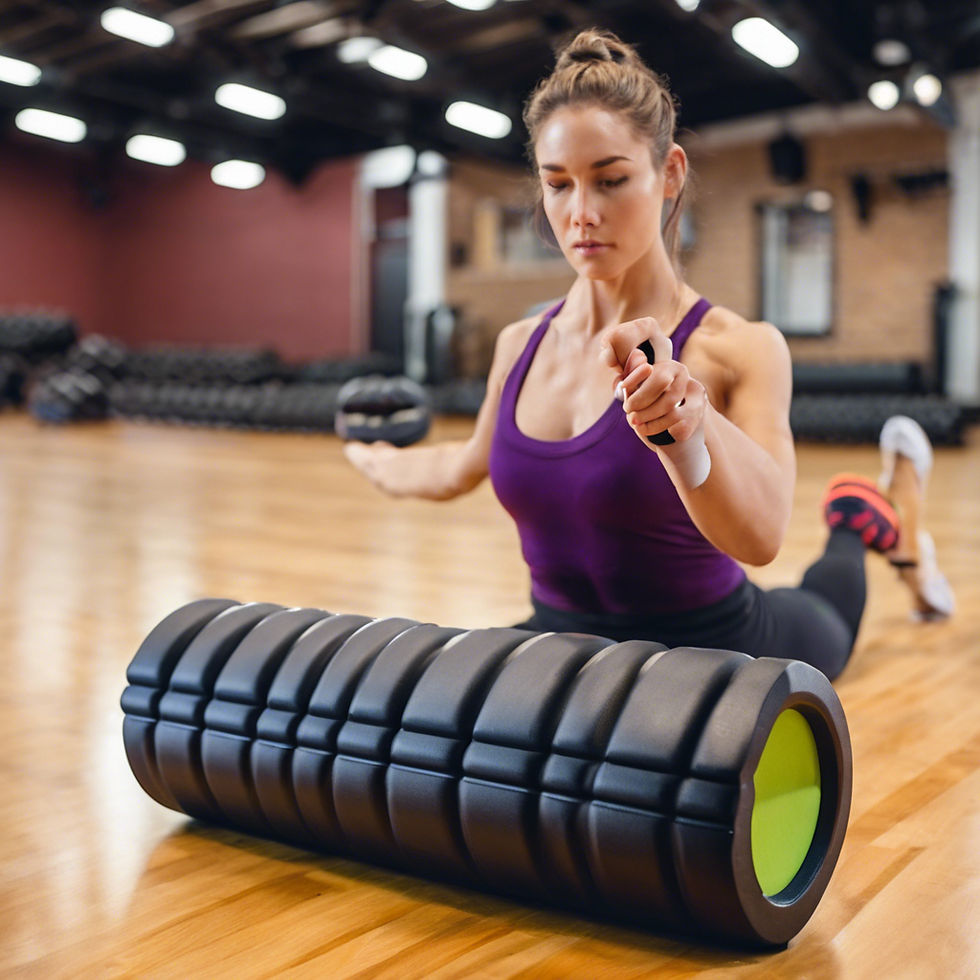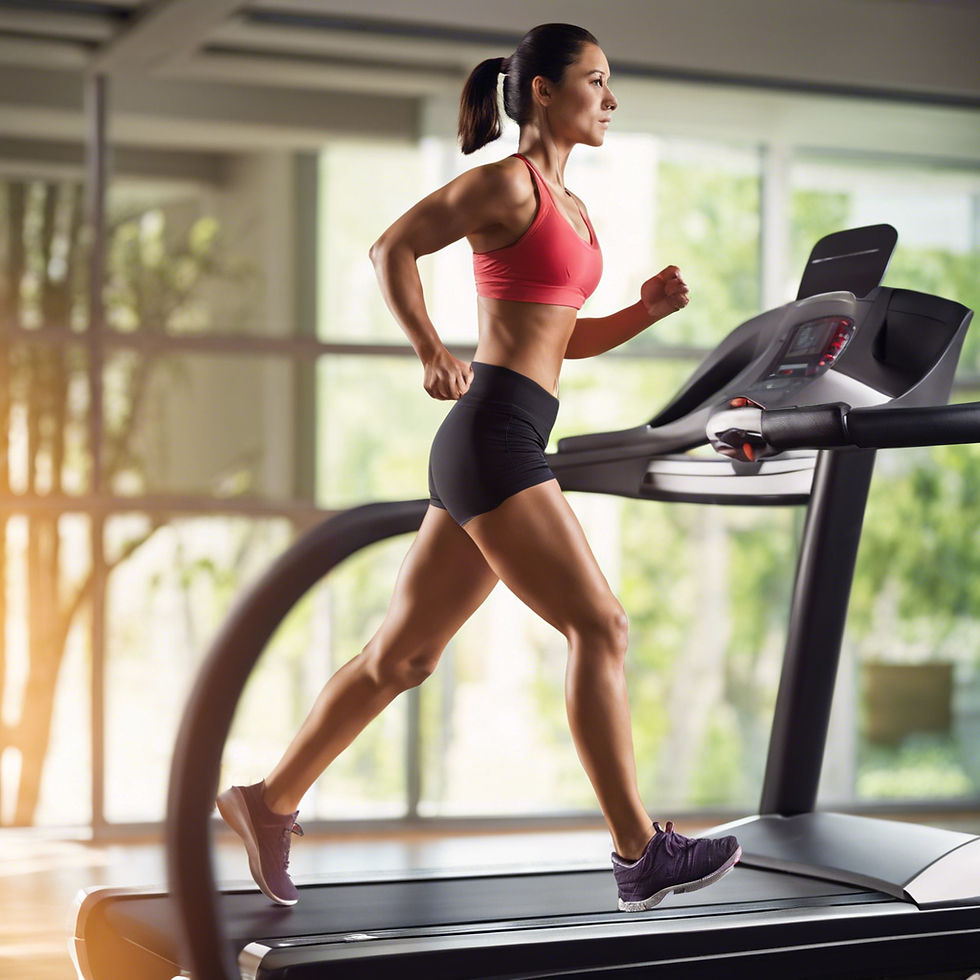Warm-Up and Cool-Down: The Unsung Heroes of Your Workout Routine
- FitnessFirstAcademy

- Jul 27, 2024
- 5 min read

Think of your workout as a thrilling action movie. The warm-up is the opening scene, setting the stage and introducing the characters, while the cool-down is the satisfying resolution, tying up loose ends and leaving you feeling accomplished. Just like a movie without a proper beginning and end feels incomplete, so does a workout without a thorough warm-up and cool-down.
These often overlooked phases play a crucial role in injury prevention, performance enhancement, and overall well-being. Let's dive into why they're essential and how to optimize them for your fitness journey, specifically focusing on dynamic stretching and foam rolling for warm-ups, and static stretching for cool-downs.
Why Warm-Up?
A proper warm-up does more than just get you sweating. It prepares your body for the demands to come, as physical therapist and strength coach Dr. Mike Israetel explains, "The warm-up is like tuning an instrument; it gets your body ready to play at its best."
Increased Blood Flow: A good warm-up gradually increases blood flow to your muscles, prepping them for activity and reducing strain.
Improved Range of Motion: Dynamic stretches and movements help lubricate your joints, increasing flexibility and reducing stiffness.
Enhanced Performance: As sports scientist Dr. David Behm notes, "A warm-up primes your nervous system, enhancing motor unit recruitment and improving your body's ability to produce force."
The Ideal Warm-Up
A well-rounded warm-up should include:
Foam Rolling: Spend 5-10 minutes on major muscle groups to loosen tightness and improve tissue quality.
Improved Range of Motion: Loosening tight muscles through foam rolling increases your flexibility and joint mobility, allowing for better performance and reduced risk of injury.
Enhanced Blood Flow: Rolling stimulates blood circulation, delivering essential nutrients and oxygen to your muscles, preparing them for exertion.
Reduced Muscle Tension: By releasing muscle knots and tension, foam rolling helps to alleviate discomfort and improve overall muscle relaxation.
Increased Muscle Activation: Foam rolling can help wake up your muscles and improve neuromuscular connection, enhancing your body's ability to recruit muscle fibers efficiently.
Mental Preparation: Focusing on your body and releasing tension through foam rolling can help you mentally prepare for your workout, improving focus and concentration.
By incorporating foam rolling into your warm-up routine, you'll be better prepared to tackle your workout with increased flexibility, strength, and overall performance.

Light Cardio: Engage in 5-10 minutes of light cardio, gradually increasing your heart rate and body temperature.
Gradual Heart Rate Increase: Light cardio gently ramps up your heart rate, preparing your cardiovascular system for more intense activity.
Increased Blood Flow: As your heart pumps harder, blood flow to your muscles improves, delivering vital oxygen and nutrients.
Enhanced Muscle Temperature: Warming up your muscles through light cardio improves flexibility and reduces the risk of injury.
Improved Performance: By elevating your core temperature, you'll experience better muscle contractions and overall athletic performance.
Mental Preparation: Engaging in rhythmic movement can help clear your mind and focus your attention on the workout ahead.
Whether it's jogging, cycling, or jumping jacks, incorporating light cardio into your warm-up is a crucial step towards maximizing your workout and minimizing injury risk.

Dynamic Stretching: Perform dynamic stretches that mimic your workout movements for 5-10 minutes. This increases your range of motion and preps your muscles for activity. Dynamic stretching is the final piece of the warm-up puzzle. By incorporating active movements into your routine, you can reap these benefits:
Improved Flexibility and Range of Motion: Dynamic stretches increase your joint mobility and muscle flexibility, allowing for greater freedom of movement.
Enhanced Performance: These active stretches mimic the movements of your workout, preparing your body for optimal performance and power output.
Reduced Injury Risk: By gradually increasing your heart rate and muscle temperature, dynamic stretching helps to reduce the risk of strains and pulls.
Increased Neuromuscular Efficiency: Engaging in dynamic movements activates your nervous system and improves muscle coordination, enhancing your body's responsiveness.
Mental Focus: Dynamic stretching requires concentration and control, helping you shift your mindset from rest to activity.
By combining foam rolling, light cardio, and dynamic stretching, you'll create a well-rounded warm-up routine that sets the stage for a successful workout.

Why Cool-Down?
Cooling down isn't just about catching your breath; it's a crucial recovery phase. Exercise physiologist Dr. Stacy Sims emphasizes, "Cooling down allows your body to gradually return to baseline, helping to remove waste products and minimize muscle soreness."
Gradual Recovery: A cool-down helps your heart rate and breathing return to normal, preventing dizziness.
Reduced Muscle Soreness: Gentle movements and static stretches increase blood flow, helping to remove lactic acid and waste products.
Injury Prevention: Cooling down helps your muscles relax, reducing tightness and the risk of cramps.
The Ideal Cool-Down
A proper cool-down should include:
Light Cardio: Gradually decrease intensity for 5-10 minutes.
Static Stretching: Hold each stretch for 20-30 seconds, focusing on major muscle groups. This improves flexibility and can be especially beneficial after exercise.
Improved Flexibility: Holding stretches for a sustained period allows your muscles to lengthen, increasing flexibility and range of motion over time.
Reduced Muscle Soreness: Static stretching helps to alleviate post-workout stiffness and soreness by releasing muscle tension.
Stress Relief: The calming nature of static stretching can help reduce stress and promote relaxation.
Injury Prevention: By improving flexibility and reducing muscle tension, static stretching can help prevent injuries.
Remember, static stretches should be performed after your workout when your muscles are warm.

Hydration and Refueling: Drink water and consume a small snack with carbohydrates and protein to replenish your body.
Replenish Fluids: Your body loses fluids through sweat during exercise. Rehydrating with water or electrolyte-rich drinks helps restore fluid balance, preventing dehydration and fatigue.
Restore Energy: Your body's glycogen stores (energy source) are depleted during exercise. Consuming carbohydrates helps replenish these stores, aiding in muscle recovery and preparing you for your next workout.
Repair Muscle Tissue: Protein is crucial for muscle repair and growth. Consuming a balanced meal or protein shake after your workout provides the building blocks for muscle recovery.
Boost Immune Function: Adequate hydration and nutrition support a healthy immune system, helping to protect your body from illness.
By prioritizing hydration and refueling after your workout, you'll optimize your body's ability to recover, adapt, and improve.
Conclusion
Warm-ups and cool-downs are not optional add-ons; they are integral parts of an effective workout routine. They optimize performance, reduce injury risk, and improve recovery. Remember, a few extra minutes dedicated to these phases can significantly enhance your overall fitness journey.
References:
Fradkin, A. J., Zazryn, T. R., & Smoliga, J. M. (2010). Effects of warming-up on physical performance: a systematic review with meta-analysis.
McGowan, C. J., Pyne, D. B., Thompson, K. G., & Rattray, B. (2015). Warm-up strategies for sport and exercise: Mechanisms and applications.
Segar, M. L. (2011). No Sweat: How the Simple Science of Motivation Can Bring You a Lifetime of Fitness.

About the Author:
Alexander Morrow is a NASM Certified Personal Trainer, ACE Certified Personal Trainer, NCSF Certified Strength & Conditioning Coach & ACE Fitness Nutrition Specialist with a passion for helping people reach their fitness goals. With a focus on strength training and functional movement, he believe in building a strong, capable body from the inside out. Connect with @FitnessFirstAcademyF1A on Instagram or visit www.FitnessFirstAcademy.com/blog for more training tips and inspiration.
Get Ready to Feel Strong and Powerful!



Comments